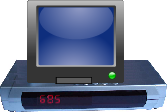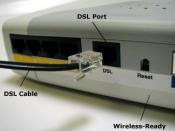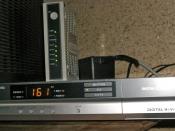Technological changes impact our lives with its fast-growing, digitalized, high-speed, electronic, multi-media global network. We are in the middle of a digital revolu-tion that is delivering more media rich information into our homes and even when we are on the move. Consider these: 1) all major, and many medium-sized towns now have ca-ble TV, 2) telephone service suppliers are increasing, 3) 22% of households now have at least one mobile phone, 4) "Digital TV with its 200 channels and interactive services is now definite, 5) TV's and telephones with Internet access can now be purchased. These are promoted as easy to set-up and easy to use, mass consumer items." (Beating, 1999).
As we look into these technological changes, a question arises in our minds, which is better, DSL, or cable modem? Offhand, I can say that it all depends on the par-ticular providers, the particular geographic area, and one's specific requirements.
There is no hard and fast rule. Either one can be good, mediocre, or poor depending on the con-sumer's needs and demands. This paper shall attempt to give a comparison of the DSL and cable modem after exploring how each works.
How DSL Works
In figuring out how DSL works, we first have to examine the wires that connect your home or small business to a telephone company. These copper wires are wound around each other and are called twisted pair. You exchange voice information and the type of signal used for this is called an analog signal. This analog signal is acoustic in nature, but is converted to an electrical equivalent in terms of volume and pitch. The sig-nal is transmitted through the wire on a selected frequency (CNet Reviews).
To properly understand DSL, we first need to know what frequencies are. In or-der to visualize this, we...


